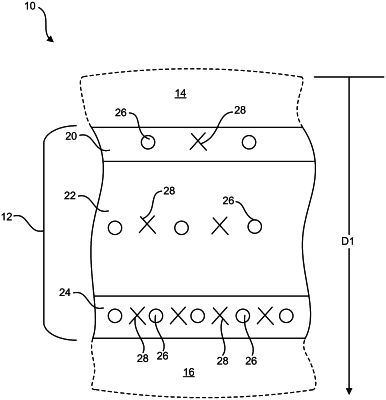| CPC A47C 21/046 (2013.01) [A47C 21/06 (2013.01); A47C 27/15 (2013.01)] | 44 Claims |

|
1. A mattress, comprising:
a plurality of separate and distinct consecutive cooling layers overlying over each other in a depth direction that extends from a proximal portion of the mattress that is proximate to a user to a distal portion of the mattress that is distal to the user;
wherein each layer of the plurality of separate and distinct consecutive cooling layers includes (i) thermal effusivity enhancing material (TEEM) with a thermal effusivity greater than or equal to 2,500 Ws0.5/(m2K) and (ii) a solid-to-liquid phase change material (PCM) with a phase change temperature within the range of about 6 to about 45 degrees Celsius;
wherein total thermal effusivity of each layer of the plurality of separate and distinct consecutive cooling layers increases with respect to each other in the depth direction;
wherein total mass of the PCM of each layer of the plurality of separate and distinct consecutive cooling layers increases with respect to each other along the depth direction; and
wherein at least one layer of the plurality of separate and distinct consecutive cooling layers includes a gradient distribution of both: (a) mass of the PCM thereof and (b) an amount of the TEEM thereof, wherein the gradient distribution increases in the depth direction.
|